China’s westernmost region plays a crucial role in the future unification of Eurasia and creating a “Sino-Islamic” connection. This is why the Americans are so focused on disrupting it.
Strategic position
The Xinjiang Uyghur Autonomous Region (XUAR) is a region that occupies a key position in Eurasia and is of strategic importance to China. It contains 40% of China’s coal reserves, a fifth of its oil and natural gas, and much of its gold reserves.
However, in addition to natural reserves, Xinjiang is important because of its geographical location. This westernmost region of China provides China with access to Central Asia and Pakistan, and through Pakistan (The China-Pakistan Economic Corridor (CPEC) – a land bridge to the Indian Ocean, bypassing the South China Sea and the Strait of Malacca that are vulnerable from the point of maritime security (the US Navy and its allies in the Pacific and Indian Oceans).
Xinjiang is also a gateway to Afghanistan, and through Central Asia to Iran, the Caspian region, Transcaucasia, Turkey, the Middle East and Europe. This strategic location makes it a key region for the development of land infrastructure, the Chinese project for Eurasia’s infrastructure unification: Belt and Road Initiative.
Six of eight Sino-European railways liking the EU markets and China are starting in Xinjiang.
Contrary to statements by the Western media and Uyghur nationalists who argue that China has controlled Xinjiang since the 19th century, in fact, China has sought to control the region since ancient times.
At the end of the first century the territory of modern Xinjiang was annexed to the Chinese Han Empire. The Empire established administrative structures for the management of the region, which continued to function under the successor states after the decline of the Han Empire.
In the middle of the VII century the territory of Xinjiang became part of the Chinese Tang Empire, and remained under its control until the middle of VIII century. However, even after that, Xinjiang for many centuries remained in the orbit of Chinese influence. It came under the control of the Qing Empire in the next stage of China’s geopolitical expansion.
The region played an important role in caravan trade with countries west of China. From a geopolitical point of view, control of Xinjiang provided China with access to Central Asia and land connection with South Asia, Iran and further European countries (the Great Silk Road).
Xinjiang has crucial geopolitical strategic importance for China. In addition to its importance for the development of the country’s economy and trans-Asian relations with China, Xinjiang is also a geopolitical buffer that covers China’s industrial and commercial core.
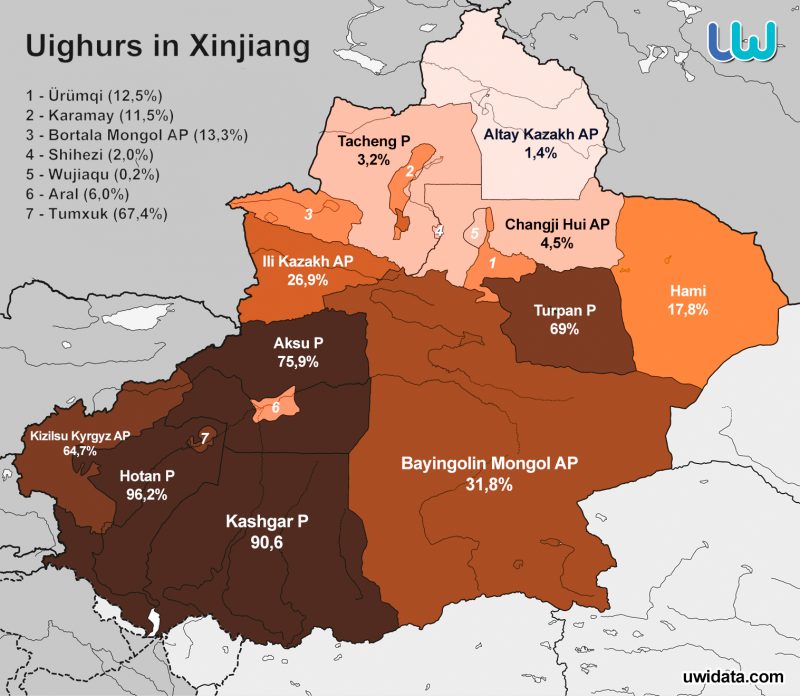
BRI and the terrorist threat
However, in the minds of most Western citizens, the word “Xinjiang” is linked to the media reports about the persecution of the Uyghurs, one of the peoples inhabiting this region. The US and its allies have turned ‘Uyghur persecutions’ accusations into an instrument of pressure on China.
On December 4, the United States introduced visa sanctions against Chinese officials and functionaries of the Communist Party of China who are allegedly involved in ” horrific human rights abuses ” in the Xinjiang Uyghur Autonomous Region, Tibet and other regions of China.
Earlier, the US imposed other restrictions against China, arguing that this was motivated by care for the Uyghurs. On December 3, the US imposed a ban on cotton and textile supplies from Xinjiang.
Allegations of alleged infringement of Uyghur rights became an important element of the Donald Trump administration’s anti-Chinese propaganda.
However, that was not always the case. Unsurprisingly, the chronology of increasing terrorist activity, the deployment of Eurasian infrastructure projects in China, which passes through Xinjiang, and Western media reports on repression of the Uyghurs in China, all coincide.
In 2013, Chinese chairman Xi Jinping announced the Silk Road Economic Belt project, which became the prototype of the onshore Eurasian part of the Belt and Road Initiative. The purpose of the project was to connect China with Europe, Central Asia and Iran through Xinjiang. In the same year, Pakistan and China signed a memorandum of understanding to establish the China-Pakistan Economic Corridor.
Between 2013 and 2014, Islamic terrorists, presumably of Uyghur origin, carried out several large-scale attacks: in Beijing, in Kunming (in Yunnan) and in Guangzhou (in Guangdong). In Kunming railway station in 2014, terrorists armed with knives killed 33 people. This is one of the largest terrorist attacks in Chinese history.
In 2014, the Western media began to report the mass imprisonment of Uyghurs in “internment camps” and unprecedented surveillance of citizens in this region of China. China does not deny the existence of re-education camps, but stresses that they are created to fight crime, religious extremists and terrorist networks.
The need to protect the Xinjiang from terrorism is key to the development of the region, as well as the rest of China has led to unprecedented security measures, which the West hastened to interpret as evidence of suppression of the Uyghurs.
At the same time, the West has openly supported extremists and separatists in Syria, Islamic radicals in Libya and welcomed “Arab Spring”. It destabilized the region of the Middle East and inspired the Islamists in Xinjiang. According to reports by Chinese mass media, at that time Uyghur extremists from East Turkestan Islamic Movement (ETIM), who fought in Syria, were behind the riots and acts of terror in Xinjiang.
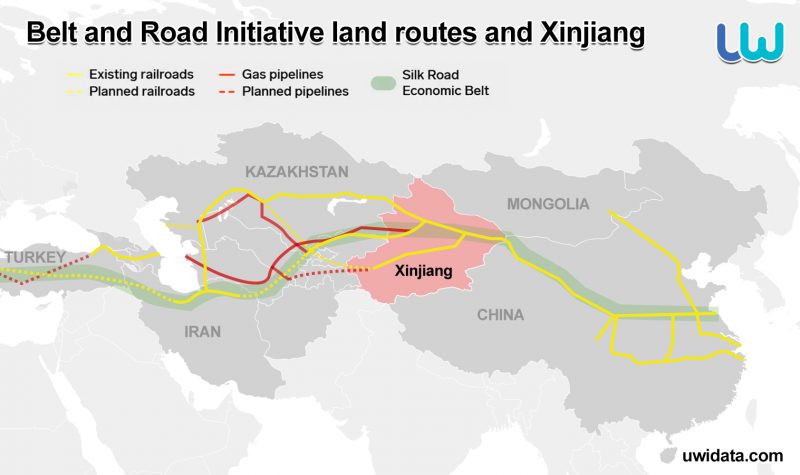
The goal of development
The establishment of the People’s Republic of China in 1949 gave the Uyghur people autonomy and recognition of many rights. Like other ethnic minorities, the Uyghurs in Xinjiang and within China itself enjoy significant privileges, which Beijing’s critics prefer to ignore.
It was China that began to actively develop Xinjiang. It also led to an influx of population from other regions of China. As a result, these people concentrated in large cities. Representatives of Islamic peoples, including both Uyghurs and Kirghiz and Kazakhs, remained the main population in the rural district and Kashgar area.
Islamists began to actively use this factor, agitating Uyghurs and other Xinjiang Turks against other peoples living in the region, primarily against ethnic Han Chinese.
China’s response was both security measures, as well as efforts to develop the region. This has also been ignored by Chinese critics.
According to China’s official view “Development is still the key to solving all the problems in Xinjiang”.
Back in 2020, President Jiang Zemin initiated the Great Western Development Campaign for Xinjiang in 2000. Since 2003, Xinjiang’s GDP growth rate has surpassed that of China.
From 2016, China increased investment in Xinjiang for example, $ 50 billion was spent on the development of the Korla region.
Drugs and terror
The real reason why China is organizing re-education camps and strengthening control measures in Xinjiang is to fight terrorism and crime. Xinjiang has long been a backward province in China, which partially explains today’s problems. Strengthening national development has created serious imbalances.
Many researchers note negative processes in the Uyghur community: the collapse of social solidarity, criminality, drug-use. Connection with Central Asia and Afghanistan is an advantage as well as a vulnerability, both in terms of religious extremism and drug trafficking.
It is no coincidence that the fight against both terrorism, drug crime and other organized crime networks has become the main agenda of the Shanghai Cooperation Organization (SCO), established by China, Russia and the Central Asian states in 2001.
In the early 2000-s Xinjiang was becoming China’s mainland’s narcotics trafficking and dealing hub.
In 2014-2015, criminal groups engaged in drug trafficking entered Xinjiang, fighting both with each other and with law enforcement agencies.
The natives of Xinjiang formed the large network of drug-sellers in other regions of China (6,284 Xinjiang residents between 2000 and 2005) . The rise of the drug abuse in China led President Xi Jinping in 2014 to declare an open war on drugs that also contributed to harsh security measures in Xinjiang
The use of terror
November 6, 2020 the US State Department removed from the list of terrorist organizations East Turkestan Islamic Movement (ETIM). This opens up the possibility for Washington to legally support this jihadist and separatist organization, which is still considered a terrorist organization by the UN.
In addition, ETIM (or rather the successor to the movement – Turkestan Islamic Party) is now active in Syria, where several thousand Uyghur militants have become one of the largest and most combat-ready forces in the province of Idlib.
ETIM and its affiliated groups also operate in Afghanistan and Pakistan (Waziristan). The US can now use these terrorists to undermine security both in Xinjiang and outside China in areas key to BRI, including Pakistan and the Middle East.
The Turkestan Islamic Party (TIP) was founded in 2005. It works with extremist organizations such as al Qaeda, the Islamic Movement of Uzbekistan (IMU), and the Taliban. Uyghur Islamists have claimed responsibility for several terrorist attacks in China and have supported the 2014 Kunming attack, without claiming responsibility.
In addition to TIP and ETIM, both associated with Al Qaeda, according to Chinese authorities, several hundred more Uyghurs fought on the side of ISIS in Syria and Iraq.
The Chinese authorities’ actions helped reduce the terrorist threat in Xinjiang itself. However, Uyghur extremists have now become a transnational threat. Back in 2010, the Turkestan Islamic Party was suspected of trying to organize terrorist attacks in Norway and Germany.
Another representative of the Uyghur diaspora, a citizen of Kyrgyzstan, Sirozhidin Mukhtarov founded the terrorist organization “Katibat Tawhid wal Jihad (KTJ),” which organized a terrorist attack in the St. Petersburg subway in Russia in July 2017 and a hit-and-run on people on April 7, 2017 in downtown Stockholm, Sweden. Uyghurs are also suspected of the Erawan Shrine bombing in Bangkok on August 18, 2015 and August 30, 2016 attack on the Chinese embassy in Bishkek, Kyrgyzstan.
Uyghur terrorism has become transnational. This also creates a problem for Turkey with its large Uyghur diaspora.
In 2015, during his visit to Beijing, Turkish President Recep Tayyip Erdoğan assured Xi Jinping that Ankara considers the “Islamic Movement of East Turkistan” a terrorist group and will not allow anyone to use the country’s territory to harm the national interests and security of China.
In August 2017, Foreign Minister Mevlüt Çavuşoğlu said that Turkey officially classified ETIM as a terrorist organization.
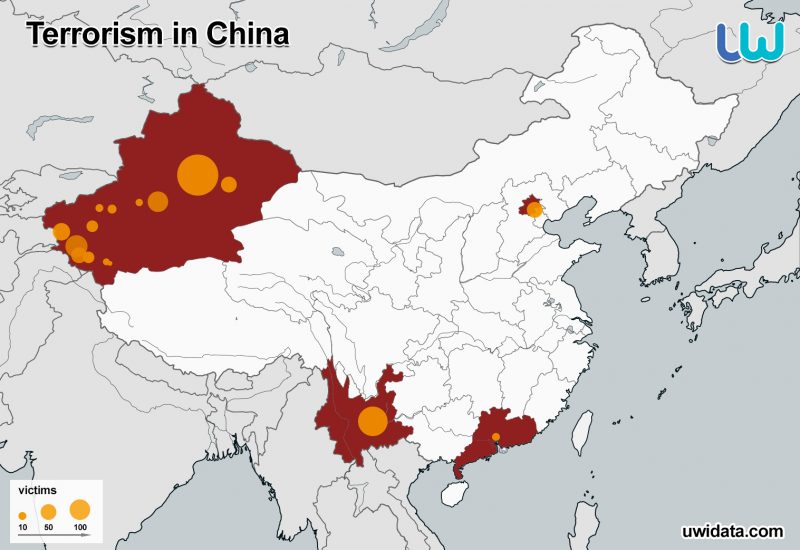
Allegations against China: lack of conclusive evidence
In September, the Australian Institute for Strategic Policy (ASPI), referring to satellite imagery data, reported on the expansion of the network of camps for Uyghurs in Xinjiang Uyghur Autonomous Region.
However, China later presented real photos of these sites, which turned out to be “administration buildings, nursing homes, logistics centers or schools.”
Similarly, local residents refuted reports of mosques being destroyed in Xinjiang, which were reported by Western media based on satellite images analysis. They also stated that arrested Uyghur “activists” or “religious leaders” are in fact religious extremists and separatists.
Western media and even analytical reports often cite the figure of “one million” Uyghurs, who are allegedly in camps in China. Western media even refer to the UN, which allegedly “is alarmed by reports of the mass detention of Uyghurs” and the “U.N. has credible reports that China holds million Uyghurs in secret camps”.
In fact, a UN body such as the Committee on the Elimination of Racial Discrimination in 2018, expressed a number of concerns, referring to the reports that came to its disposal.
It does not produce a genuine independent report by its own based on factual evidence and never uses the figure of 1 million of detained.
The figure of 1 million in 2018 was announced by Guy McDougall, a US representative at the United Nations Committee on the Elimination of Racial Discrimination, citing “credible reports”. There is a great distinction between the position of one of the UN committees (not the UN as whole) and the position of individual (American) diplomats.
However, as noted by the US research portal the Grayzone, the figure of “millions detained” first appeared in 2018 in the report Chinese-Human Rights Defenders (CHRD), a Washington DC-based NGO backed by the US government. It was the report of this organization, sent to the UN Committee on the Elimination of Racial Discrimination, Guy McDougall called “credible”.
Thus, the opinion of the American diplomat is presented as the position of the UN, and the report, composed by the Americans is portrayed as the “UN report”.
Other sources of information about “repression” against Uyghurs in China also look extremely suspicious:
– The World Uyghur Congress (organization funded by the National Endowment for Democracy or NED of the United States).
– The Uyghur Human Rights Project, which is also working with NED
– So-called East Turkistan Exile Government (based in Washington D.C.), whose “prime minister” Salih Hudayar, proposed to the US “use the Uyghurs, just like the Kurds in the Middle East, to protect US interests in Central Asia and Asia-Pacific in the long run”.
– Radio Free Asia (an international broadcasting corporation funded by the US government)
– Adrian Zenz – a German anthropologist and senior fellow in China studies at the Victims of Communism Memorial Foundation (USA), a far-right organization in the US with links to the CIA.
– Bellingcat – a British research project. According to Wikileaks, the project received funding from the UK Department of Defence
– The International Consortium of Investigative Journalists (ICIJ), which published in 2019 the so-called China Cables. ICIJ is funded by several Western foundations, including the George Soros’ Open Society Foundation and the American Ford Foundation.
Chinese and Xinjiang authorities have repeatedly invited journalists and diplomats to officially come to the country to assess the real situation. So far, China’s critics have not taken advantage of this offer.
Double standards
Now the US claims to be the main advocate of Muslims in China, who are allegedly discriminated against. This sounds strange from a country that has been invading Muslim countries for 30 years, bombing them, leading a drone war in Africa and the Middle East killing not only innocent civilians but also high-ranking military from Muslim countries like Iranian Qassem Soleimani.
The US never closed down the Guantanamo base, where Uyghurs suspected of terrorism were tortured, among others. It also sounds strange that China has been accused of installing security cameras from countries that also actively use all modern methods of population surveillance, and where people may be arrested for refusing to wear a mask.
It is very strange to hear accusations against China from France, against the background of anti-Muslim statements of Emmanuel Macron and his initiatives to put Islamic religious organizations under the control of the French state.
It is also very interesting that the US and its allies are silent about the infringement of the rights of Muslims in India. In 2019, the current leadership of India cancelled the special status of Jammu and Kashmir, the state where the majority of the population are Muslims. It was divided into two union territories, Jammu and Kashmir and Ladakh.
At that time, curfews were introduced in Kashmir, internet access was restricted and intensified patrolling of the streets by the military was introduced.
Restrictions for Muslims in India do not apply only to Kashmir. In November, in the Indian state of Uttar Pradesh, Muslims were forbidden to marry girls of another religion. The state authorities saw it as Islamic proselytism – ‘love jihad’. It is expected that similar laws will be adopted in 4 more states.
Now, a couple made up of adherents of different religions will have to notify a judge two months before the wedding and then get approval from the authorities. Otherwise, the guilty will face up to 5 years in prison.
However, the US now considers India its main ally in the fight against China in the Indo-Pacific region. Therefore, the Western media prefer to turn a blind eye to the oppression of Muslims in India.
Thus, the US openly cooperates with countries and regimes that openly discriminate against Muslims and reduce the autonomy of Muslim regions (India).
Conclusions:
- Xinjiang plays a key role in China’s land geopolitics. This region provides China with important geostrategic advantages within the BRI project. At the same time, it is vulnerable to external impact. This is why Beijing is making unprecedented efforts to maintain security in the region and to assist the integration of local people into Chinese society. It is the real background of the measures that western media portray as repression.
- The intensification of the geopolitical confrontation between the US and China and the announcement of BRI has led to increased attempts to undermine Xinjiang (terrorist attacks). The response was security measures (surveillance) and re-education camps. It was the US that created the situation in which China is accused.
- The US information war against China, in which reports of restrictions against the Uyghurs became a tool, was intended to prevent the Chinese BRI project from materializing. It cannot be implemented without Muslim countries, primarily Pakistan and Turkey.
- The task of the US is to play on the emotions of the population in order to turn their religious and ethnic solidarity with the Uyghurs against the national interests of their countries, so that emotions (based on questionable information) do not allow the development project with the Chinese participation to be realized.
- At the same time, the US demonstrates its double standards by forgetting about violations of the rights of Muslims in countries that are allied to them.
- The US is using the old divide and conquer principle, pitting against each other forces that questions American global hegemony: the Islamic world and China. So the US tries to undermine that “Sino-Islamic connection” that was described as a threat to the West by the famous American political scientist Samuel P. Huntington. Thus the issue of Xinjiang becomes crucial for the future of the multipolar world.
- In Xinjiang, Americans use the forces of separatism in the same way as in Syria, Iraq or Turkey itself (American support for the PKK). Therefore, the support of separatists in one country will rise the tendencies for disintegration in others.
- The use of Uyghur separatism by the Americans actually harms the Uyghurs most. It leads to a tightening of the position of Beijing and application of new security measures. The sanctions will also have a negative impact on the development of the region.
- Islamic and Turkic countries could (without interfering in the sovereign affairs of China) contribute to finding mutual understanding and balance between the requirements of integration of Uyghurs (and also Kazakhs and Kyrghyz) in Chinese society and the preservation of their identity. However, if they oppose China, they will lose this opportunity.
- The experience of the Hui Muslims and their Sufi tradition, where Islam and Confucianism (as a broad philosophy of Chinese civilization) were successfully integrated (Liu Zhi and his book Han Kitab), shows that this work can be done. The similar initiatives can be realized in the frames of non-rigid interpretation of Islam, where such countries as Turkey, Pakistan, Indonesia and Malaysia with their broad history of religious movements and interfaith and intersectarian dialog can take an active participation.
- China’s integration with other countries in the Eurasian space, where the main role played by the states of the Islamic world, the joint fight against terrorism in the frames of SCO, rather contribute to the fact that Xinjiang my play a constructive and unifying role. Joint solution of problems and participation in the development of the region only can lead to improvement in the situation of Uyghurs and other peoples of Xinjiang.
- On the other hand, China’s experience in Xinjiang should be rethought without unnecessary emotions. In general, China has managed to achieve almost complete cessation of terrorist activity since 2014. This experience, as well as Chinese technology (taking into account national specifics) such as facial recognition, application of artificial intelligence and even deradicalization camps may be applied in other countries, including in the fight of Turkey against the PKK, ISIS, FETÖ and their supporters.


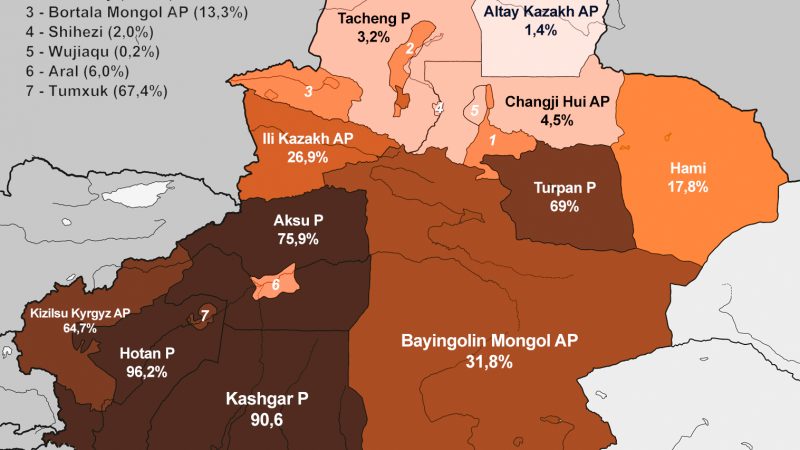

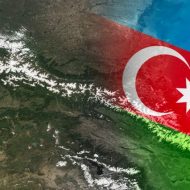
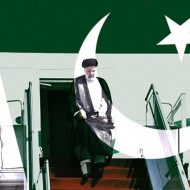
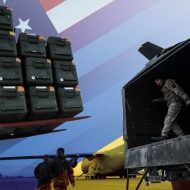

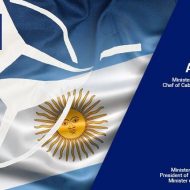
This post is nothing but propaganda to cover the crimes committted by China, Turkey and many other muslim countries who are literally aware but doing nothing about it. The leaked documents themselves have very strong evidences that people are forcefully take to to those camps and never get out for the rest of their lives as if they “disappeared”. I don’t even have to mention the millions of uighurs who got out of china and told the REAL story to the public and media. This post is nothing but a propaganda in order to make people brainwashed and not react to the economic deals being signed between god knows who. Shame on this website.
“millions of uighurs who got out of china and told the real story”
“millions”
Laughs
fantastic commentary on Xinjiang and BRI